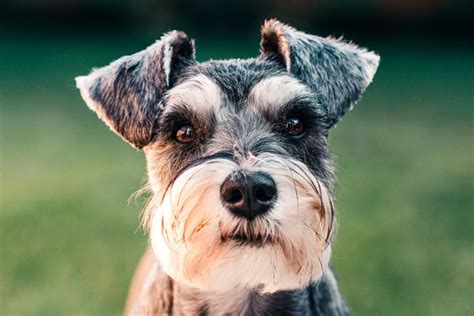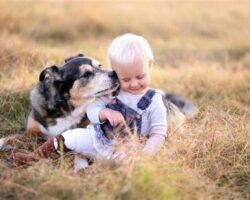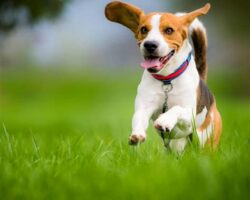Discover the factors affecting shedding in dogs, choose the right low-shedding breed, and learn grooming tips. Find hypoallergenic breeds perfect for families. Benefit from low-shedding dogs.
Understanding Shedding in Dogs
Shedding is a natural process for all dogs, as it allows them to get rid of old or damaged hair. Understanding why dogs shed can help pet owners manage their dog’s grooming needs and keep their home clean.
Several factors can affect how much a dog sheds, including their breed, size, and the climate they live in. Breeds with double coats, such as Golden Retrievers and Siberian Huskies, tend to shed more than breeds with single coats like Poodles and Bichon Frises. Additionally, dogs in warmer climates may shed more to regulate their body temperature.
Regular grooming can help minimize shedding and keep a dog’s coat healthy. This includes brushing their fur regularly, providing a balanced diet, and ensuring they get enough exercise. Understanding the factors that affect shedding can help pet owners choose the right breed for their lifestyle and keep their dog looking their best.
Factors Affecting Shedding
Factors Affecting Shedding
Shedding in dogs can be influenced by a variety of factors, including the breed, age, and overall health of the dog. Dogs that were originally bred for hunting or outdoor work tend to shed more as they have a thicker coat to protect them from the elements. Additionally, younger dogs may shed more as they go through their puppy fur to adult fur transition. Furthermore, the overall health of the dog plays a role in shedding, as a poor diet or certain medical conditions can lead to excessive shedding.
Another significant factor affecting shedding in dogs is the environment in which they live. Dogs living in areas with extreme temperatures, such as very hot or very cold climates, may shed more as their coat adapts to the weather. Indoor and outdoor dogs also shed at different rates, as outdoor dogs may shed more as their coat is exposed to natural elements and debris.
Finally, the grooming and care of a dog can impact shedding. Breeds with longer hair may require more frequent grooming to prevent matting and tangling, which can lead to excessive shedding if not properly maintained. Regular brushing and bathing can help reduce shedding by removing loose fur and distributing natural oils throughout the coat.
Choosing the Right Low-Shedding Breed
When it comes to choosing the right low-shedding breed for your family, it’s important to consider a few key factors. First, consider the size of the dog. Smaller breeds typically shed less than larger breeds, making them a great choice for those looking to minimize grooming. Additionally, consider the energy level of the breed. High-energy breeds may require more frequent grooming to keep shedding under control, while low-energy breeds may shed less overall.
Another important factor to consider when choosing a low-shedding breed is the coat type. Breeds with single coats, such as poodles and Bichon Frises, tend to shed less than breeds with double coats, such as huskies and golden retrievers. The texture of the coat can also play a role in shedding, with curly coats often shedding less than straight coats.
Finally, consider the lifestyle and preferences of your family. Some low-shedding breeds, such as the Maltese and the Shih Tzu, are known for their affectionate nature and love of being around people. Other breeds, such as the Basenji and the Greyhound, are more independent and may not require as much grooming attention. By taking all of these factors into consideration, you can choose the right low-shedding breed for minimal grooming that fits your family’s lifestyle and needs.
Grooming Tips for Low-Shedding Breeds
When it comes to grooming low-shedding breeds, it’s important to remember that just because they don’t shed as much, doesn’t mean they don’t require regular grooming. In fact, some low-shedding breeds may need more frequent grooming to prevent their hair from matting and to keep their coats healthy and clean.
One important grooming tip for low-shedding breeds is regular brushing. Even though they may not shed as much, brushing helps to remove loose hair and prevent mats from forming. It also helps distribute natural oils in their coat, keeping it shiny and healthy.
Another grooming tip for low-shedding breeds is regular baths. While it’s true that these breeds may not shed as much, regular baths help keep their coat clean and healthy, and can also help reduce allergens for those sensitive to pet dander. Be sure to use a gentle, dog-friendly shampoo and thoroughly rinse to avoid any skin irritation.
Hypoallergenic Dog Breeds
Low Shedding Dog Breeds for Minimal Grooming
When it comes to choosing a dog breed, one of the main concerns for many potential owners is allergies. Allergies to pet dander can make it difficult for some people to enjoy the company of dogs without suffering from symptoms such as sneezing, itching, and watery eyes. That’s where hypoallergenic dog breeds come into play.
These breeds are considered to be more compatible with allergy sufferers, as they produce fewer allergens than other breeds. Some popular hypoallergenic breeds include the Poodle, Bichon Frise, Shih Tzu, Maltese, and Portuguese Water Dog. These breeds are known for their minimal shedding and dander, making them a great choice for individuals with allergies.
In addition to being hypoallergenic, these breeds often require minimal grooming, making them a low-maintenance option for dog owners. With their friendly and affectionate nature, hypoallergenic dog breeds are a great choice for families and individuals looking for a canine companion without the hassle of excessive grooming and allergy concerns.
Best Low-Shedding Breeds for Families
Best Low-Shedding Breeds for Families
Welcoming a furry friend into your family is an exciting decision, but for those with allergies or who simply want to minimize the amount of pet hair in their home, finding a low-shedding breed is essential. Luckily, there are several dog breeds that are known for their minimal shedding, making them ideal for families.
One such breed is the poodle. Whether standard, miniature, or toy, poodles are renowned for their low-shedding coats and friendly personalities. They are also highly intelligent and easily trainable, making them great companions for families with children. Another popular low-shedding breed is the bichon frise, known for its affectionate and gentle nature. These fluffy white pups are hypoallergenic and typically shed very little, making them a great choice for families with pet allergies.
If you’re looking for a larger low-shedding breed, consider the schnauzer. This loyal and protective breed is known for its minimal shedding and comes in three sizes: giant, standard, and miniature. Their wiry coat requires regular grooming, but they are generally low-shedding and make excellent family pets. Another great option for families is the shih tzu. These small, affectionate dogs have a long, flowing coat that requires regular maintenance, but they are considered a low-shedding breed and are known for their friendly and outgoing personalities.
Benefits of Low-Shedding Dogs
Benefits of Low-Shedding Dogs
Low-shedding dogs are becoming increasingly popular among pet owners for a number of reasons. One of the main benefits of having a low-shedding dog is the minimal grooming required. With less hair being shed, low-shedding breeds often require less frequent brushing and maintenance, making them an excellent choice for those with a busy lifestyle.
Another benefit of low-shedding dogs is the reduction of allergens in the home. People with allergies to pet dander often find that low-shedding breeds are more manageable and cause fewer allergic reactions. This can make for a much more comfortable living environment for both the pet owner and their family members.
Low-shedding dogs also tend to require less clean-up around the house, as there is less hair to vacuum and sweep up. This can save pet owners a significant amount of time and effort, and can also lead to a cleaner and more hygienic living space. Additionally, low-shedding breeds are less likely to leave hair on furniture and clothing, making them a more practical choice for those who prefer a tidy home.
Frequently Asked Questions
What are some low shedding dog breeds?
Some low shedding dog breeds include Poodle, Shih Tzu, Bichon Frise, and Yorkshire Terrier.
Are low shedding dog breeds hypoallergenic?
While no dog breed is completely hypoallergenic, low shedding dog breeds produce fewer allergens and are often a better choice for allergy sufferers.
How often do low shedding dog breeds need to be groomed?
Low shedding dog breeds still require regular grooming to prevent matting and maintain a healthy coat. Grooming frequency varies by breed, but most will need grooming every 6-8 weeks.
Do low shedding dog breeds require less maintenance?
While they do shed less, low shedding dog breeds still require regular exercise, training, and attention to their health and wellbeing.
What are the advantages of owning a low shedding dog breed?
The advantages of owning a low shedding dog breed include reduced allergens in the home, less cleaning up after shedding, and often a lower grooming and maintenance requirement.
Are low shedding dog breeds suitable for people with allergies?
Low shedding dog breeds can be a good option for people with allergies, but it’s important to spend time with the specific breed to gauge any allergic reaction before bringing one home.
What are some considerations before getting a low shedding dog breed?
Before getting a low shedding dog breed, consider factors such as grooming needs, exercise requirements, temperament, and compatibility with your lifestyle and living situation.





